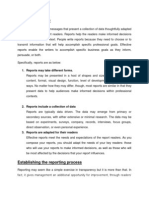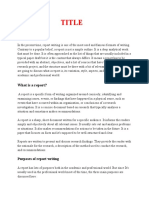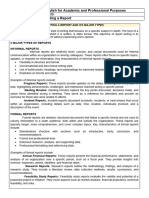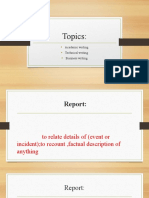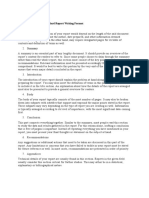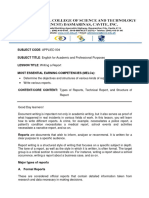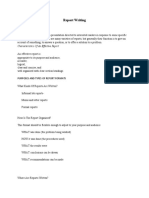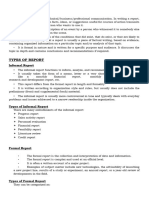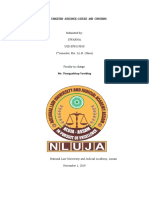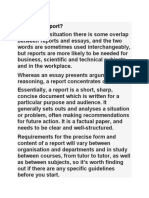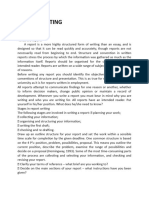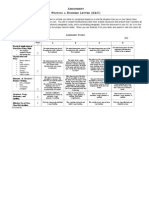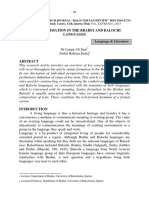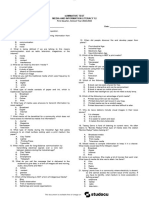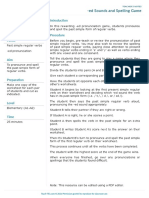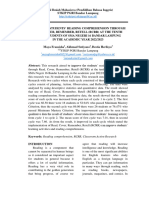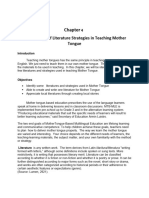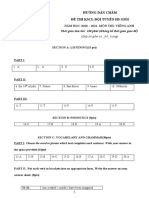0% found this document useful (0 votes)
24 views8 pagesWhat Is Report Writing
Report Writing is the structured process of presenting information to communicate facts, findings, or recommendations to a specific audience. It includes various types such as Routine, Special, Formal, and Informal Reports, each serving different purposes and audiences. The typical format consists of elements like a title page, executive summary, methodology, findings, analysis, conclusion, and recommendations, with tips for effective writing emphasizing clarity, organization, and audience awareness.
Uploaded by
sisayasmare96Copyright
© © All Rights Reserved
We take content rights seriously. If you suspect this is your content, claim it here.
Available Formats
Download as PDF, TXT or read online on Scribd
0% found this document useful (0 votes)
24 views8 pagesWhat Is Report Writing
Report Writing is the structured process of presenting information to communicate facts, findings, or recommendations to a specific audience. It includes various types such as Routine, Special, Formal, and Informal Reports, each serving different purposes and audiences. The typical format consists of elements like a title page, executive summary, methodology, findings, analysis, conclusion, and recommendations, with tips for effective writing emphasizing clarity, organization, and audience awareness.
Uploaded by
sisayasmare96Copyright
© © All Rights Reserved
We take content rights seriously. If you suspect this is your content, claim it here.
Available Formats
Download as PDF, TXT or read online on Scribd
/ 8




